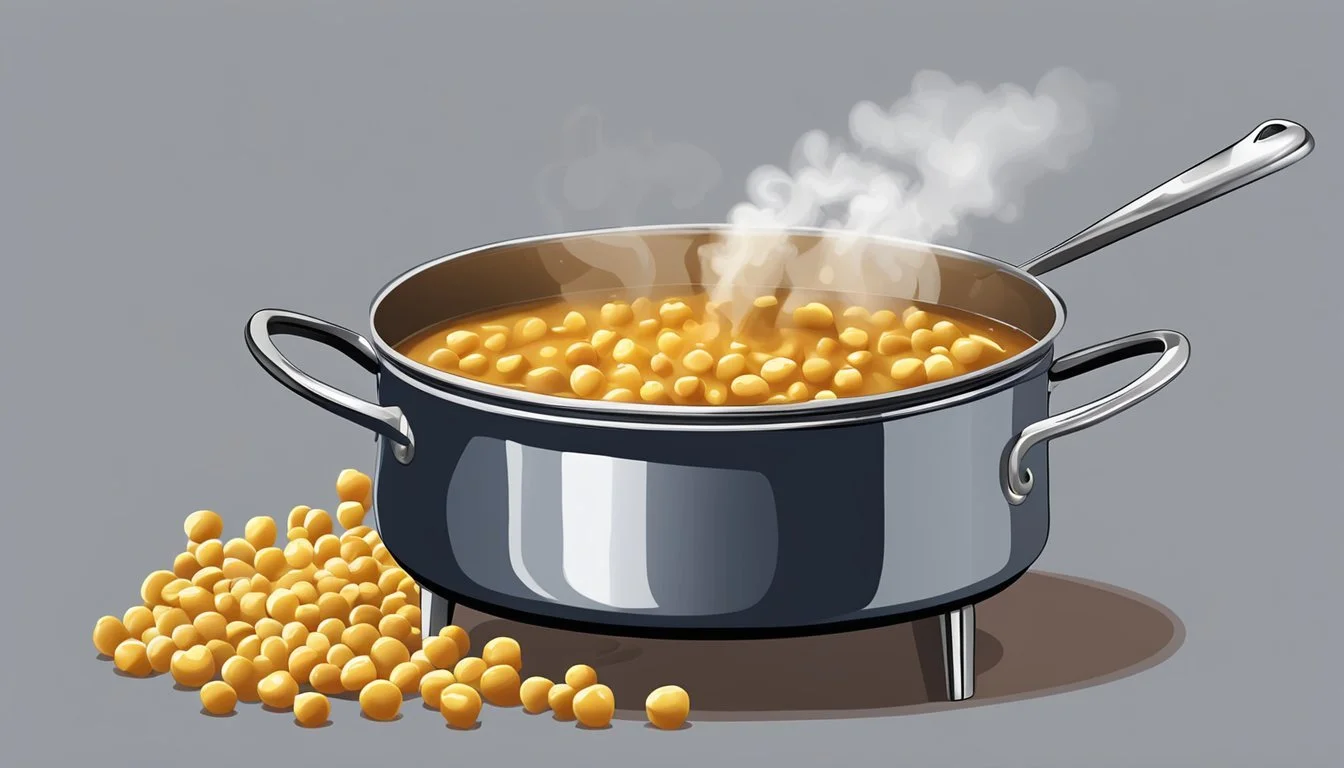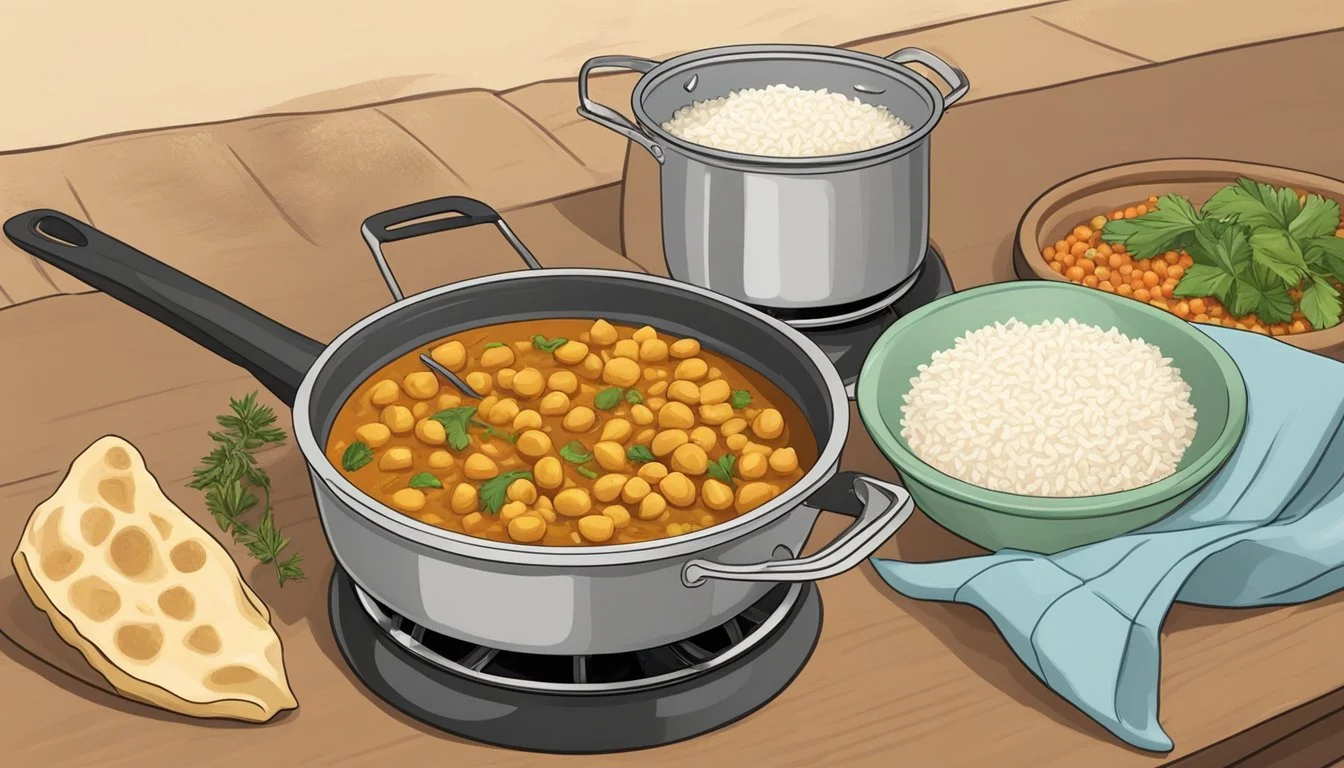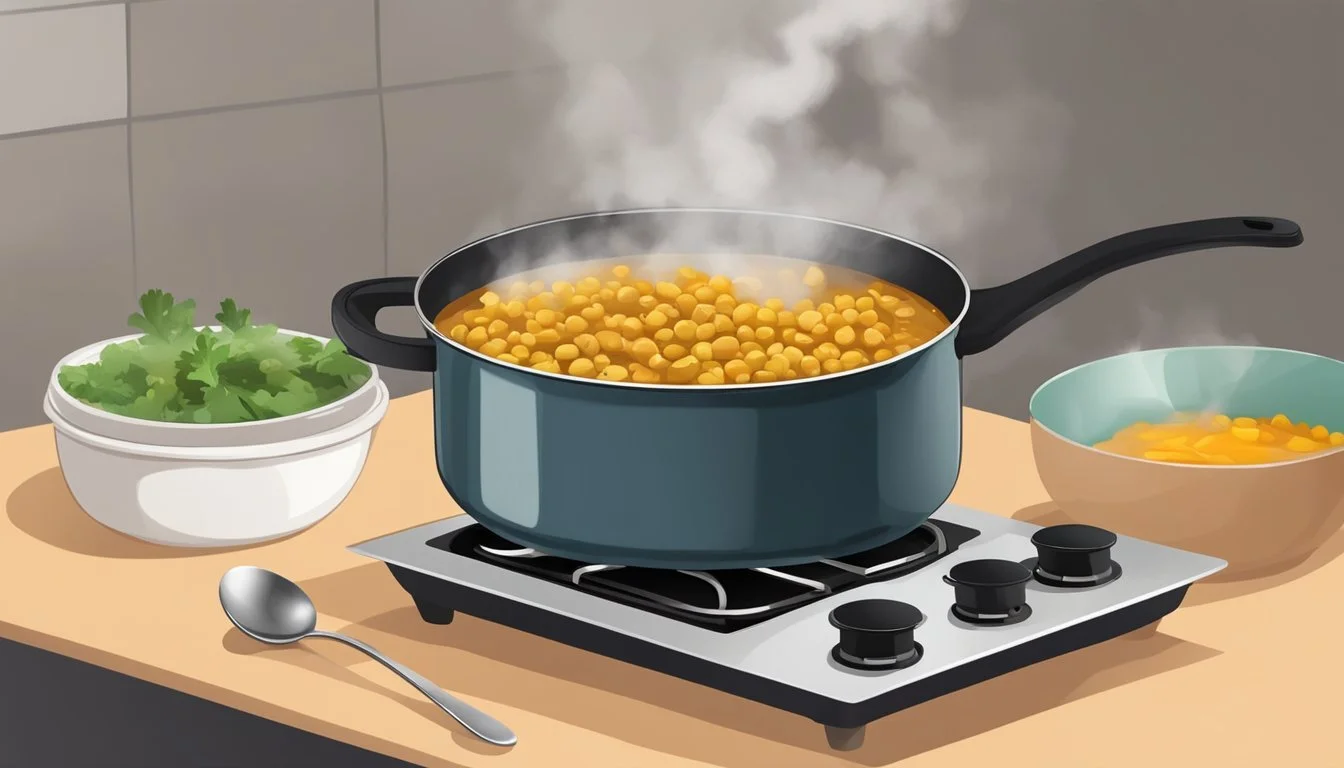How to Reheat Chickpea Curry for Best Flavor and Texture
Reheating chickpea curry doesn't have to be a daunting task. Whether using a microwave or an oven, it's essential to preserve the dish's flavor and texture. To reheat chickpea curry in the microwave, transfer it to a microwave-safe dish, cover it loosely, and add a tablespoon of water to maintain moisture. Reheat at a medium temperature in short increments of 30 seconds, stirring between each burst to ensure even heating.
For those who prefer the oven method, preheat the oven to 350°F (180°C). Spoon the curry into an oven-safe dish and cover it with foil or a lid to keep the moisture locked in. Allow the curry to heat for 15-20 minutes, stirring halfway through to ensure consistent warmth throughout the dish.
Retaining the original flavors and textures while reheating is crucial. Using these techniques ensures that your chickpea curry remains as delicious as when it was first cooked, making your leftovers just as enjoyable.
Understanding Chickpea Curry
Chickpea curry is a popular dish known for its rich flavors and numerous health benefits. The combination of chickpeas, spices, and other ingredients creates a nutritious and hearty meal.
Components of Chickpea Curry
Chickpea curry typically includes a blend of chickpeas, spices, and vegetables. Common spices used are garam masala, curry powder, turmeric, cayenne, and cumin. These spices give the dish its distinctive flavor.
Tomato paste and diced tomatoes provide a rich, tangy base. Onion, garlic, and ginger are often sautéed to enhance the aroma. Coconut milk adds a creamy texture and balances the spices with a subtle sweetness. An optional cornstarch slurry can be used to thicken the sauce.
Health Benefits
Chickpea curry is not only delicious but also packed with nutrients. Chickpeas are a great source of fiber, protein, and essential minerals like iron. The high fiber content aids digestion and promotes a feeling of fullness.
Spices like turmeric and ginger have antioxidant and anti-inflammatory properties, contributing to better health. The dish is also naturally vegetarian and can easily be made vegan, making it an excellent choice for those following plant-based diets. Coconut milk provides healthy fats, and tomatoes offer vitamins and minerals.
This combination of ingredients makes chickpea curry an excellent option for a nutritious and balanced meal.
Pre-Reheating Considerations
Proper storage and preparation are crucial for reheating chickpea curry safely and effectively. Ensuring that leftovers are stored correctly and prepping the curry before reheating can maintain flavor and texture.
Importance of Safe Storage
Leftover curry should always be stored in an airtight container to prevent bacteria growth and retain freshness. Once cooked, let it cool to room temperature before refrigerating.
Store the curry in the fridge if you plan to consume it within 3-4 days. For longer storage, freezing is ideal as it can extend the shelf life up to 2-3 months. When freezing, make sure the container is labeled with the date of storage to keep track of usage time.
Ensure that the container is freezer-safe to avoid any damage or contamination. Proper freezing and thawing can significantly impact the curry’s texture and flavor, making it essential to follow these guidelines.
Prep for Reheating
Before reheating, defrost frozen curry in the fridge overnight to ensure even heating. Reheating directly from frozen can lead to uneven temperatures, risking food safety. If time is a constraint, use the defrost setting on the microwave.
Transfer the curry to an oven-safe dish and, if needed, add a small amount of water or stock to thin the sauce. Cover the dish with aluminum foil to retain moisture and prevent drying out. Preheat your oven to 350°F (180°C) and reheat for about 15-20 minutes, stirring halfway to ensure even heating.
Check the temperature before serving. The curry should reach an internal temperature of 165°F (74°C) to ensure it is safe to eat. Use a food thermometer for accuracy.
Reheating Techniques
To retain the texture and flavor of chickpea curry during reheating, it is vital to use the correct method. Choose between the microwave, stovetop, and oven techniques based on your convenience and needs.
Microwave Method
The microwave technique is quick and convenient for reheating curry. Place the chickpea curry in a microwave-safe dish, adding a tablespoon of water to maintain moisture. Cover the dish loosely to prevent splatters.
Heat the curry at a medium temperature for short increments of 30 seconds, stirring between each burst. This helps ensure even heat distribution. Continue until the internal temperature reaches a palatable level. Be cautious not to overheat as it can affect the curry's texture and flavor.
Stovetop Method
Reheating on the stovetop is another effective method. Use a skillet or a Dutch oven for this process. Start by placing the curry in the skillet and adding a few tablespoons of water or stock to thin the sauce if needed.
Heat the curry over medium heat, stirring occasionally to prevent sticking and ensure even heating. Heat until the curry reaches the desired internal temperature. This method helps in maintaining a consistent texture.
Oven Method
For those who aren't in a rush, the oven method is ideal for reheating curry. Preheat the oven to 350°F (180°C). Transfer the curry into an oven-safe dish and cover it tightly with aluminum foil or a lid.
Place the dish in the preheated oven and warm it for 15-20 minutes, stirring once halfway through. This ensures the curry heats evenly. Check the curry to ensure it reaches a suitable internal temperature without drying out.
Proper reheating techniques preserve the enjoyment of your chickpea curry meal.
Maintaining Quality During Reheating
Properly reheating chickpea curry requires attention to maintaining texture, flavor, and creaminess. Key strategies involve stirring regularly and adding liquids to keep the curry moist, as well as adjusting spices and seasonings to ensure the taste remains vibrant.
Stirring and Adding Liquids
When reheating chickpea curry, stirring is crucial for even heat distribution. Using a microwave, stir every 30 seconds to prevent cold spots and ensure the curry heats uniformly.
Liquids like water, coconut milk, or vegetable stock help maintain moisture. Adding a tablespoon at a time can prevent the curry from drying out.
For oven reheating, cover the curry with foil and preheat the oven to 350°F (175°C). Check and stir every 10 minutes, adding a small amount of liquid if necessary to maintain the sauce's creaminess.
Adjusting Spices and Seasonings
Reheating can sometimes dull the flavors of chickpea curry. To counteract this, taste the curry after reheating and adjust seasonings accordingly.
Add fresh herbs, a pinch of salt, or a squeeze of lemon juice to revive the dish's original vibrancy.
If coconut milk was used originally, a small extra splash during reheating can enhance flavors and smoothness. For a spice boost, consider adding a bit of freshly ground pepper or a modest sprinkle of chili flakes. Ensuring the flavors and textures are balanced will keep the reheated curry tasting as delightful as when it was freshly made.
Serving and Pairing
When serving chickpea curry, it's important to consider the accompaniments and garnishes that complement the flavors and textures of the dish. These additions can elevate your meal, making it a more balanced and enjoyable experience.
Accompaniments
A chickpea curry pairs beautifully with various types of rice, such as basmati rice or cauliflower rice. Basmati rice provides a fragrant and fluffy base that absorbs the flavors of the curry well. Cauliflower rice is a great low-carb alternative, maintaining a light texture that complements the hearty curry.
Naan bread is another classic accompaniment. It can be used to scoop up the curry, providing a chewy contrast to the soft chickpeas. For those looking for a healthier option, a fresh salad with greens can work well alongside the curry, adding a refreshing crunch.
Garnishes
Adding garnishes to your chickpea curry can enhance both its flavor and visual appeal. Chopped fresh cilantro is a popular choice, offering a burst of freshness that contrasts nicely with the rich curry sauce. Fresh herbs like parsley or mint can also be used for a similar effect.
For added texture and flavor, sprinkle some toasted nuts or seeds on top. They provide a bit of crunch and an extra layer of taste. Including a side of lemon wedges can allow diners to add a touch of acidity, balancing the dish's richness.
These thoughtful additions can transform your reheated chickpea curry into a delightful and well-rounded meal.
Alternative Uses for Leftover Chickpea Curry
Leftover chickpea curry can be transformed into a variety of delicious dishes. By incorporating it into new recipes or using it as a base, you can create budget-friendly and satisfying meals.
Incorporating into New Dishes
Leftover chickpea curry can be used to make hearty wraps and sandwiches. Place the curry into a whole-grain wrap with some fresh lettuce, sliced tomatoes, and a dollop of yogurt or hummus. This creates a quick and nutritious meal. Similarly, you can use pita bread or naan to make a flavorful sandwich.
Another option is to serve the curry with quinoa or roasted potatoes. The nutty flavor of quinoa complements the rich spices of the curry, while crispy roasted potatoes add a comforting texture. Both options offer a balanced meal with protein and fiber.
Leftover curry can also enhance breakfast dishes. Consider spreading it over toast or using it as a filling for omelets. Adding a sprinkle of cheese or fresh herbs can elevate the flavor further.
Creating a Base for Other Curries
Transforming leftover chickpea curry into a base for other vegetable curries is simple. By adding fresh or frozen vegetables like bell peppers, cauliflower, or spinach, you can create a new dish that feels fresh and different. Adjust the seasoning as required and let it simmer until the vegetables are tender.
For those who enjoy non-vegetarian options, incorporate the leftover curry with chicken or seafood. Add pre-cooked chicken pieces, fish fillets, or shrimp to the leftover curry and allow it to heat through. This not only creates a flavorful meal but also makes sure leftovers are put to good use.
Using leftover curry as a base reduces meal prep time and extends the life of your ingredients. It also allows for creativity in the kitchen, making every meal an opportunity for a new culinary experience.






